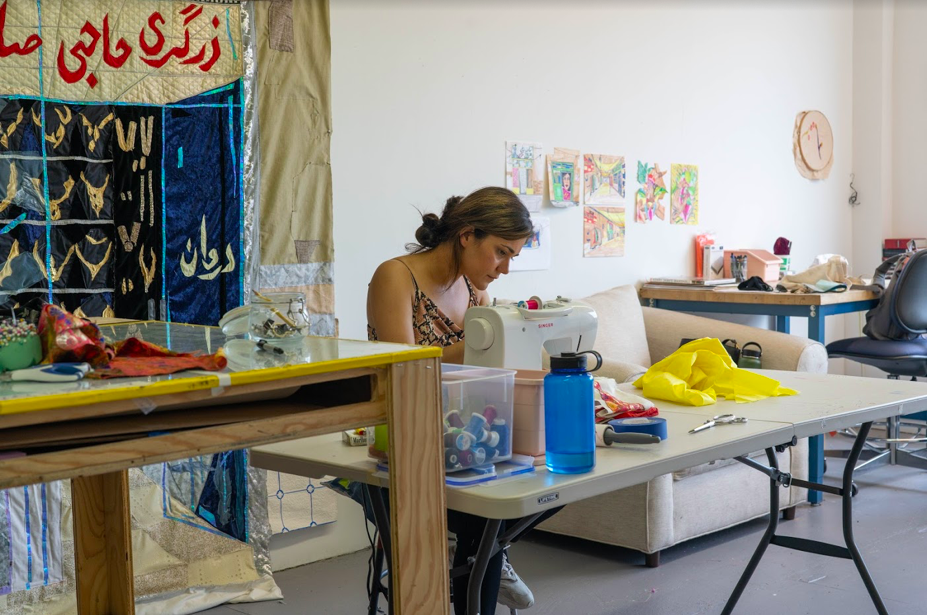November 9, 2020
Artist to Watch:
Hangama Amiri:
Storytelling Through Textiles
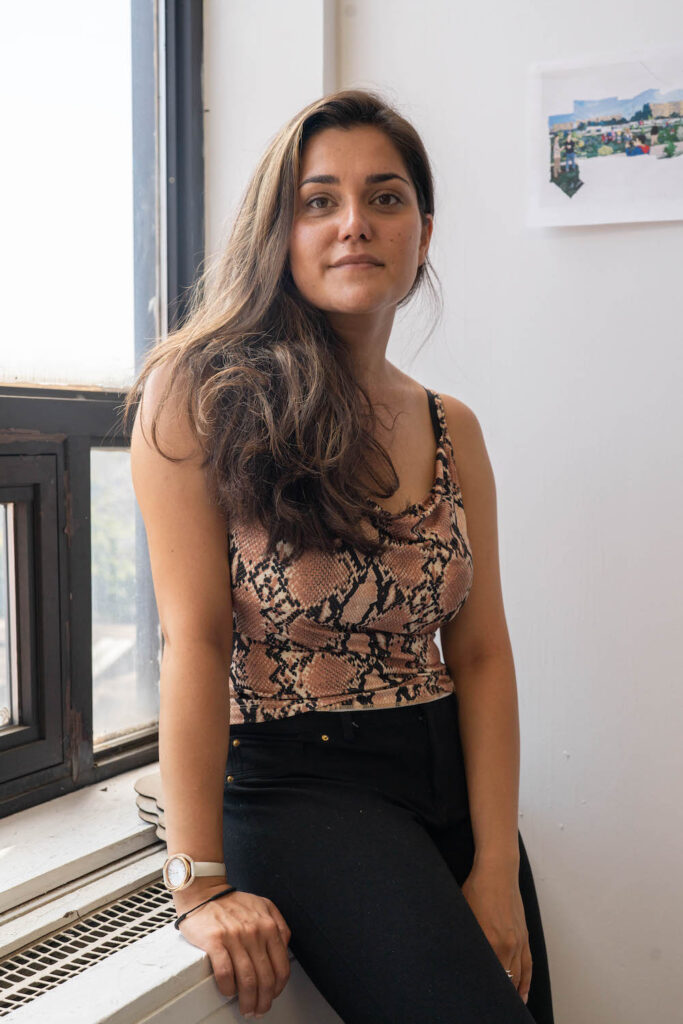
N: Can you tell us your story up until you were accepted into the Yale MFA Program?
H: I was born in a refugee camp in Peshawar, Pakistan in 1989. That was during the civil war, the war in Afghanistan, where people were migrating from country to country. My Mom was a refugee in her own neighborhood. I spent most of my life in Kabul, Afghanistan, and that’s why I call myself an Afghan artist. Since then, when the Taliban took power in 1996, we became refugees to Pakistan again. We were there until 1999. After that we became refugees to Dushanbe, Tajikistan. We lived there until 2005, when we immigrated to Canada. During these times I was always interested in the arts. From a young age I was always drawing my dreams and stories about moving country to country. I was also drawing about my future or my utopic hope for the future. It was really interesting. In Tajikistan I took my arts seriously, because I won a small scholarship in the arts program. It was a two-year scholarship for the Olimov College of the Arts. I applied through a UNICEF competition–I won first place and that led me to a two-year degree in the college of arts. From there I learned a lot about academic drawing. It was a very Russian based school, so they taught me a lot about observational life drawing. My passion for that grew, and when we immigrated to Canada in 2005, I decided to continue making my art. I graduated my BFA program from NSCAD University in Halifax, Nova Scotia. From there I took five years to exclusively do artist residencies. I’ve done residencies in Europe and Canada. I was also a Canadian Fulbright. I completed an independent research program at Yale University—it was a different program at than the MFA, but being in New Haven for a year as a Fulbrighter gave me an opportunity to be closer to the Yale School of Art. There I made really close friends. Tomashi Jackson was still in school, it was her second year I think. Alteronce Gumby was there too, so lots of great artists that we now know these days. It was really interesting because people were so serious about their art and their views in artmaking, practice, and material. Discussions were taking place and it really opened me to also seeing my art here someday, at this level. I took another year off again after my research and came back. I graduated during the pandemic, and now I’m still working and living in New Haven.
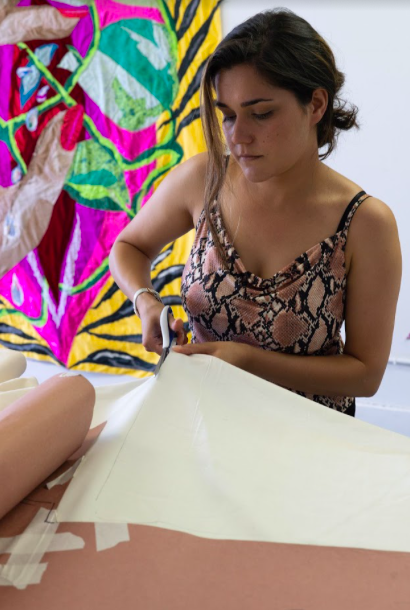
N: What themes do you explore in your work? What does your creative process entail? How do you explain your choice of medium?
H: In my art practice I explore themes of childhood memories, fragmented identities, gender, and the contemporary Afghan women’s voice. These themes have always been my interests, for a long time—painting the untold stories of the Afghan woman and bringing them into the visual arts context and giving them an importance and voice.
My process really takes place in the beginning when I start making my projects. I do a lot of looking into the visual culture specifically in Afghanistan. I research and draw a lot. I also sketch out my plans and the direction the theme will take. From there I go on to fabric. In the actual material process there is a lot of fabric appliqué, cutting, and collaging involved. There is a lot of painting with gouache, colored pencil, or colored markers to give me an idea of color as a memory and how I memorize those colors. That’s my process—juggling materials before the actual finishing of a piece.
The medium of my choice is textile. I call them “textile art” pieces because the fabrics that I’m using aren’t just fabrics in shopping malls or in fabric stores, but they are geographically specific. They’re not only from the garment district of New York City, but from Afghanistan, Pakistan, India, and Tajikistan. It’s really important for me to choose my fabrics specifically based on their context and culture.
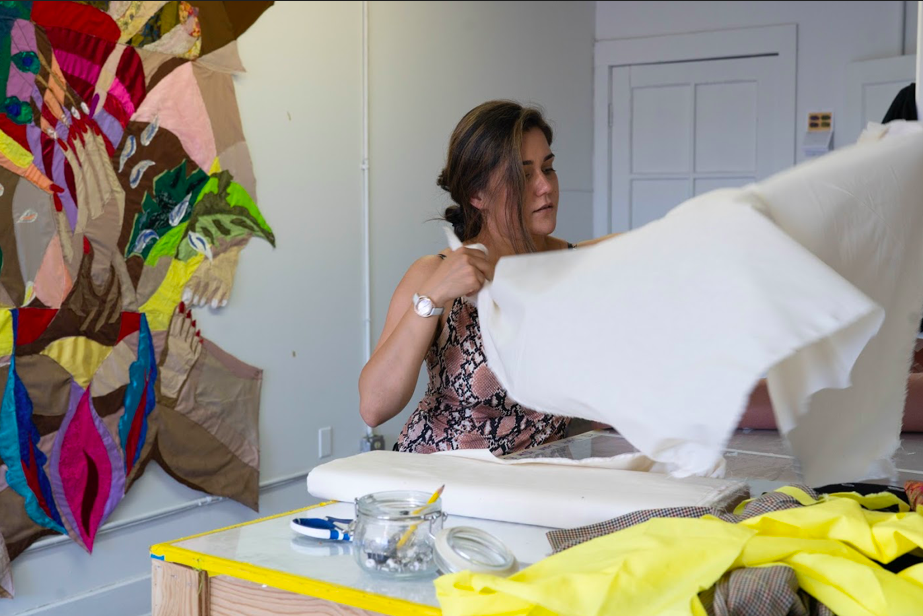
N: Where did you learn how to sew?
H: I learned sewing on my own at Yale University. I started at Yale as a painter, but I slowly became interested in collaging. My paintings usually evolved around painting cultural patterns from memory that related to Afghan culture or how women would dress in certain patterns or fabrics. So I was interested in painting fabrics, but from there I questioned the material a lot. I was having problems with canvases too. Slowly, I gathered materials together and started stitching them and uniting them. I started needling first and that became such a meditative practice in my studio. I was really looking forward to stitching, uniting stories together. From there the machine made it a bit faster, gathering materials quickly to embroider. It became a drawing tool for me and now I make my own patterns using the machine. I was inspired by my school–I wasn’t the only artist working with embroidery. My group was so diverse in their craft and materials. Together we were all learning about this history of fabric and embroidery. So, it was a really creative year.
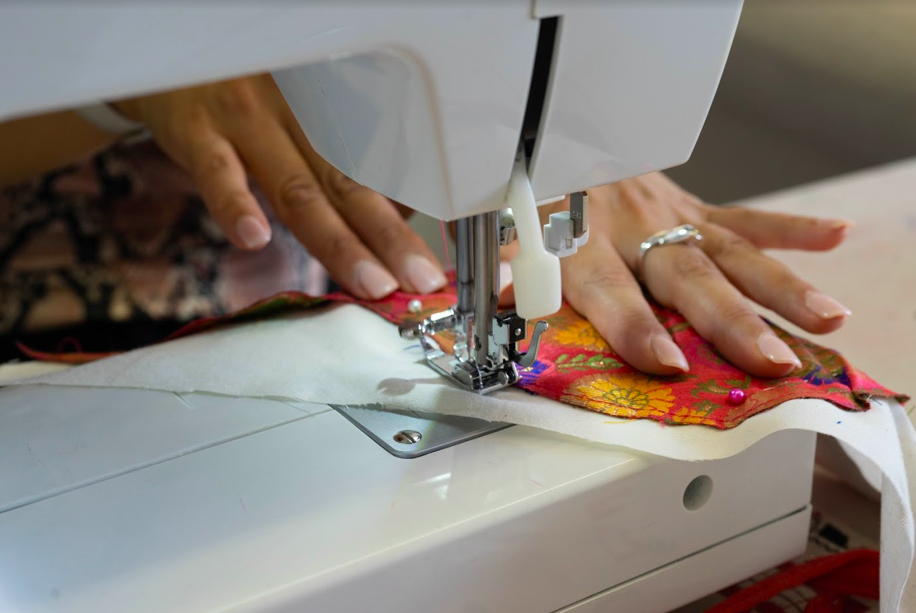
N: Why don’t you tell us about your MFA work Beauty Parlor and some of its elements and meanings?
H: I did the Beauty Parlor series when I was in my second year at Yale. I really focused on women’s issues again and women’s social life in Kabul city. I was thinking of my recent visits back there and how my relationships were with the community of women. The society is very gender constructed, so I had most contact with my own cousins, my own women. So, it was really interesting for me to wherever I explored, be surrounded by women. Salons are really interesting because there were so many women’s salons in Kabul. It really inspired me to see women in business that created public spaces where they could go, do makeup, be beautiful, treat themselves, you know? It was really beautiful to go there and be with them, because a few of my cousins also had weddings. It was really celebratory to be around them. In this piece I was very interested in the spaces that women shared. In that particular series I depict women being treated. There’s a bride sitting in the center of the piece that’s also gazing at us, while the other person is treating her hands. It is such an intimate space as well, because there are women to women treating each other but no other contacts. On the right side you can see women waiting in a waiting room. The top part is the title of the Shop. It’s called Arayeshgahe, Bahar in Farsi. And on the left side we have a soldier standing with the sign of a gun. Mostly, when women from important families would visit these public spaces, they would always bring a guard with them, just for security. So, no matter how free they would feel inside, outside was still a war-zone. They would feel insecure being outside, so I wanted to reference that part as well. In this piece the fabrics that I’ve used, in this piece specifically, have traditional Afghan coatings in cut-out and collage. It also shows a dollar bill, because people were using dollar bills in a state of Afghan money. It was interesting to see there because I still felt like I was in America or in Canada instead of Afghanistan. That object was really familiar to me. In this piece I also use photographs that are references to Bollywood actresses or movies, because those salons also had a lot of posters of Western models or Indian, Bollywood actresses. That also references our talk about beauty politics. Questioning the beauty politics of Western culture, me being here for example, is about appearance. But there, the beauty politics are very much within themselves. As soon as women walk outside, they wear a veil. They want to be beautiful within their own communities. So, it is also a question of those layers that I played with in this piece.

N: Tell us about your most recent shows. What can we expect from your shows coming up?
H: A few of my recent shows were online, with everything moving to the online platform these days. A recent one that I was very happy about was with Perrotin Gallery, where they invited a group of artists from the MFA program to show our Post-Thesis shows on online platform. That was very successful and we were very happy to be still involved in the arts scene after graduating.
I am really excited about my solo show with T293 Gallery in Rome starting November 21st. The title of the exhibition is called “Bazaar: A Recollection of Home”. It’s pretty much reminiscing a bazaar environment in fabric, and this environment comes from my childhood memories of growing up in the bazaar. I’m pretty much transforming this space with the things that I’ve seen in the bazaar. The objects that I’ve seen are the objects that I relate to, specifically because when I was young, I always used to go to the bazaar with my aunts and with my Mom. We also used to go to the tailor shop and many clothing stores. Again, beauty salons, nails salons. So, these were the spaces where women would spend their leisure time on Friday or the weekends. Remembering back, that space tells a lot about time, politics, and history. Back then it was pre-Taliban and I could still witness that there weren’t many businesses owned by women. It was still a very male-dominated public space. Comparing that to my recent visits to bazaars, it actually has changed. I’ve seen so much hope in the voices of women. This space has transformed, and these women attract more women, business-women. They have beauty salons under their names. So for me, in this solo exhibition, I’m creating a space that women feel they belong to, which is the bazaar. The bazaar is a space in Post-Taliban society that women still don’t feel that they belong, a part of the public space. But for me in this exhibition, I’m creating an environment where women are the most important thing, with their voices, images, and names being written loudly.
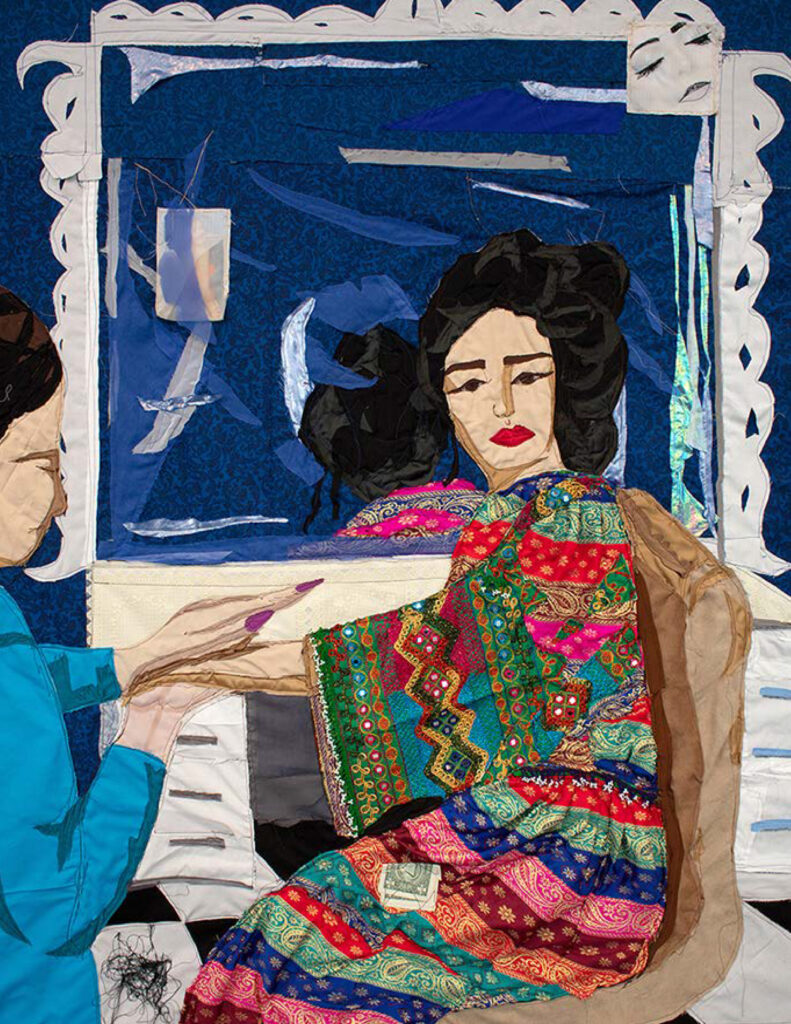
N: In the current climate of political divisiveness, cultural reckoning, and social justice, what do you believe the role of the artist is at this moment in time?
H: I really love this question, Nicole. I think it is a very tough question, but very important for artists to have. All I can say in this situation is that for me, it’s everyday. For me the role of an artist is to never stop working, never be silent, and also never fear. It reminds me of a really good quote by Toni Morrison: “This is precisely the time when artists go to work. There is no time for despair, no place for self-pity, no need for silence, no room for fear. We speak, we write, we do language. That’s how civilizations heal.” I feel like her quote is so important to always look back on in these political times we live in. She says it all.
N: So, keep working?
H: Yes, keep working. I think we have the tools to challenge the facades that are happening in our daily life.
N: Well you beautifully place the strength and power of Afghan women, central within your work. You’re doing this everyday. Thank you.
H: Thank you, I appreciate it. No stop sign yet!
